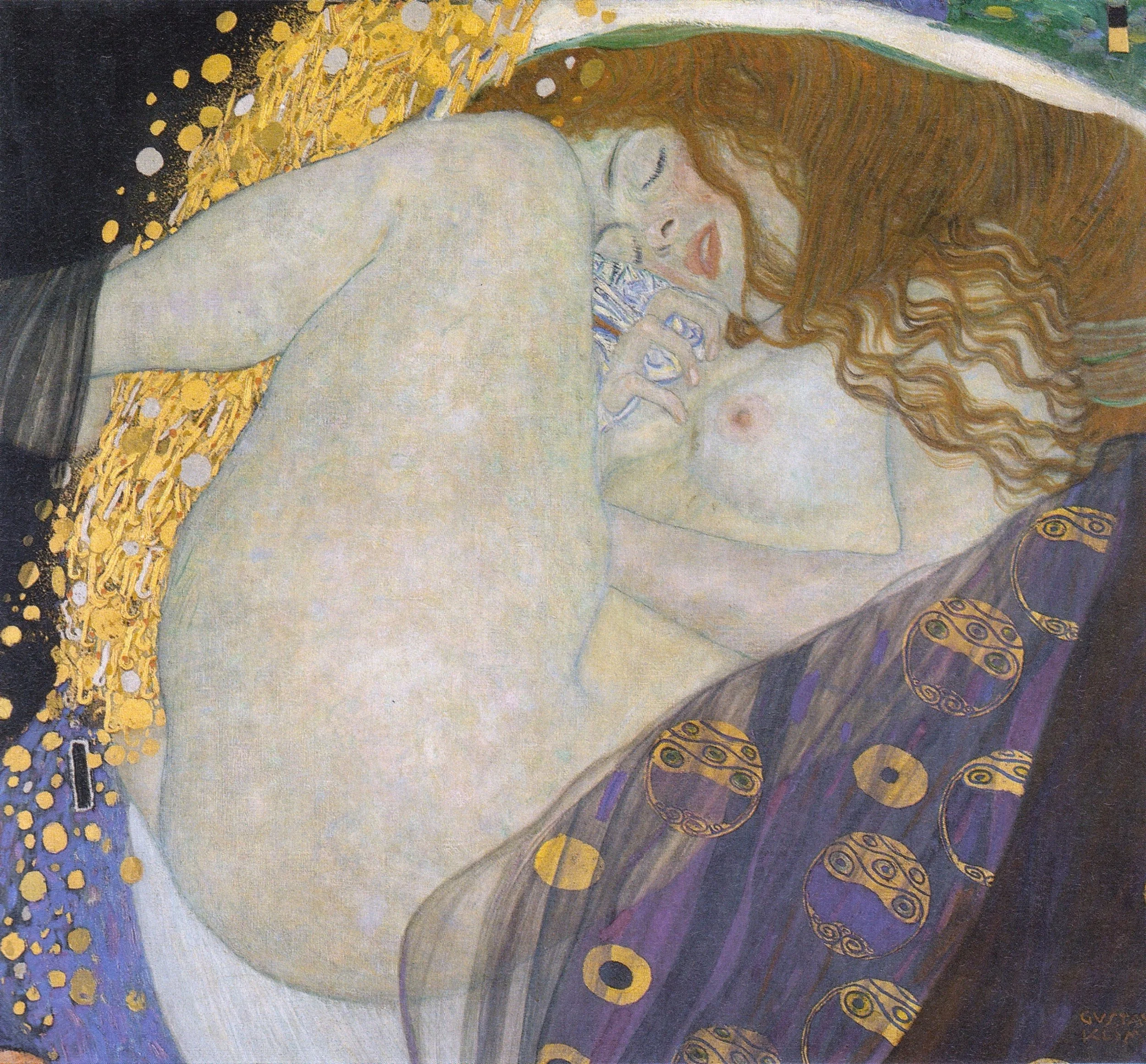Gustav Klimt
Gustav Klimt in 1887
Born near Vienna in 1862 Gustav Klimt was an Austrian symbolist painter and one of the most prominent members of the Vienna Secession movement. Klimt is noted for his paintings, murals, sketches, and other objets d’art.
His mother, Anna had an unrealized ambition to be a musical performer. His father, Ernst was a gold engraver.
He studied Architectural Painting at the School of Applied Art in Vienna. The teaching was academic and classical and he studied the techniques of mosaics, frescos and decorative painting. He helped his teacher paint murals in the Kunsthistorisches Museum in Vienna, and so began his career painting interior murals and ceilings in large public buildings, and taking commissions for decorative work in private residencies.
In 1888 Klimt received the Golden Order of Merit from Emperor Franz Josef I of Austria for his contributions to murals painted in the Burgtheater. He also became an honorary member of the University of Munich and the University of Vienna in recognition of his skill.
Vienna at this time was the 4th largest city in Europe and home to many musicians and artists. In 1897 The Vienna Secession was formed, an association of young artists, designers, sculptors and architects with Klimt as a founder member and president.
They were in revolt against academic rigidity, questioning the hierarchy of fine art over applied arts. The aim was to raise the profile of all art forms, and so gain economic support by opening state funded exhibition spaces.
Danaë is an oil painting by the Austrian artist Gustav Klimt, created in 1907. An example of Symbolism, the canvas measures 77 x 83 cm, and was in the Galerie Würthle in Vienna until it closed in 1995. The work belongs to the art collection of Hans Dichand and is today in the possession of his three children.
His primary subject was the female body, and his works are marked by a frank eroticism. His subjects, although powerful, were often an affront to society at the time and he was censored from exhibiting certain paintings which were considered too overtly sexual. He visited Venice, Florence and Ravenna where he saw Byzantine Mosaics and Icons which inspired his use of gold backdrops and ornamentation. Klimt became famous above all as a “painter of women”.
Gustav Klimt ‘Adele Bloch-Bauer I’ , 1907 sold for a record $135 million in 2006
He could now concentrate on painting how he wished, women as femme fatale clothed in a mosaic of pattern and colour. He often included spirals, cell like structures and stylised plant forms. He also designed textiles with similar motifs for his life partner Emilie Louise Flöge’s Fashion House. His most famous painting ‘The Kiss’ is thought to be a portrait of them as lovers.
Beginning in the late 1890s he took annual summer holidays with Emilie and her family on the shores of Attersee, and painted many of his landscapes there. He discovered Fauvism in Paris and the colours of Matisse and Bonnard. From this time on gold was replaced by a kaleidoscope of floral ornamentation in bright colours.
After his death in 1918, many paintings were found unfinished and they show his working method. The face and figure are drawn and painted, then the decoration and clothing were added to cover the nude body.
Gold was used only once in a landscape. ‘The Golden Apple Tree’ - 1903 ( which was sadly destroyed by fire in 1945).
Would you love to paint like Klimt? Join us for our 10 week All-Abilities course and explore wide range of mediums and artistic styles. These art classes are suitable for all abilities, including complete beginners. We explore everything from architecture to portraits, using pencils, charcoal, pastels, watercolour, gouache and acrylics.



